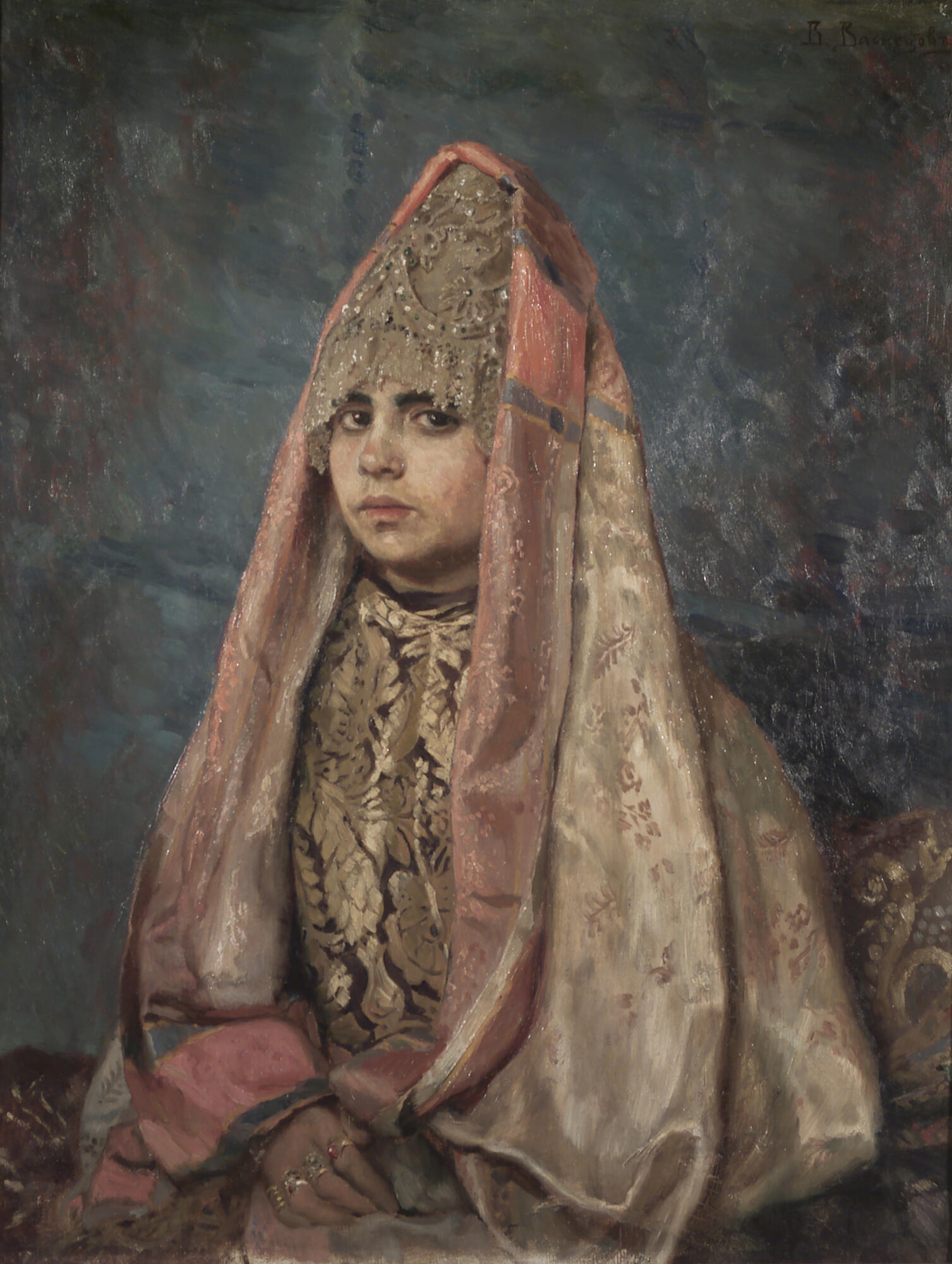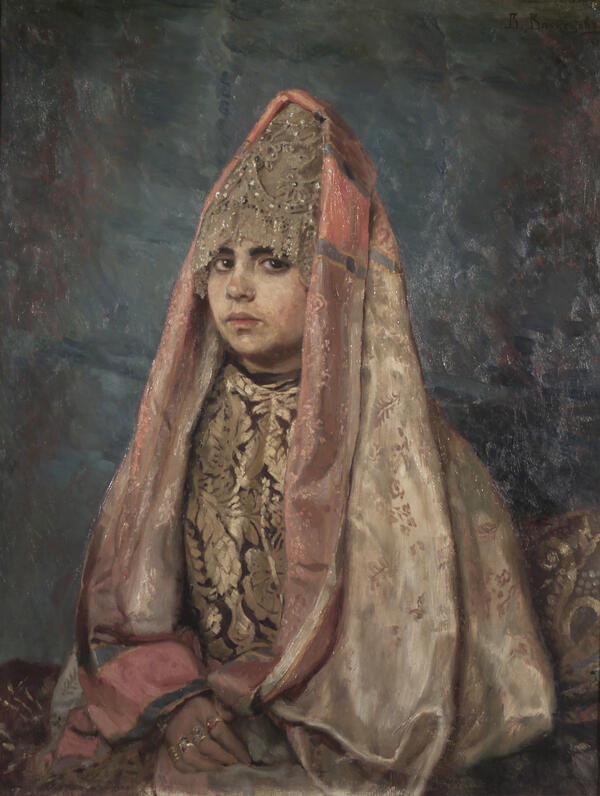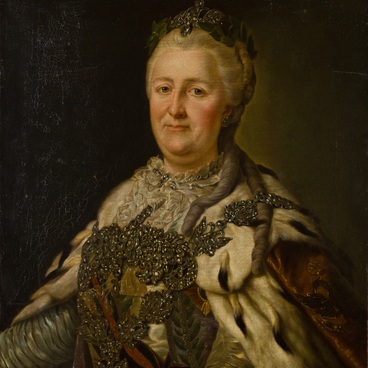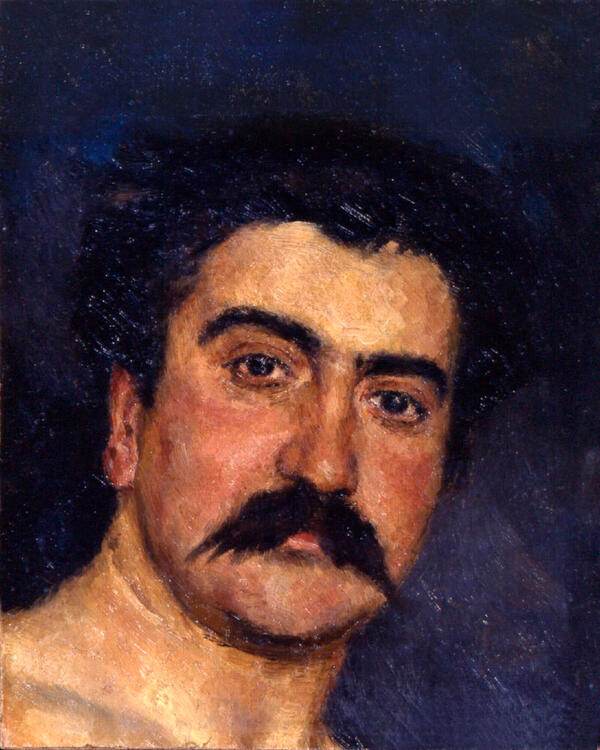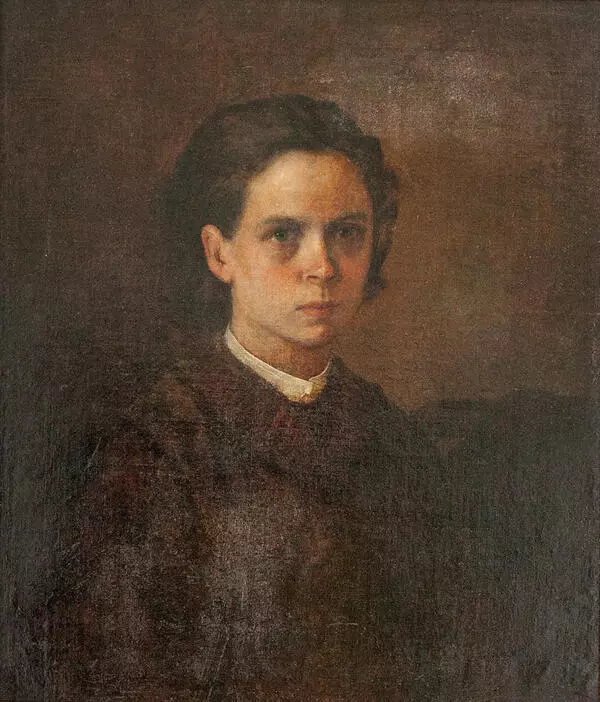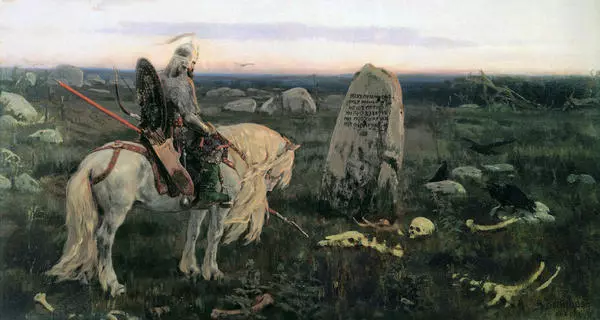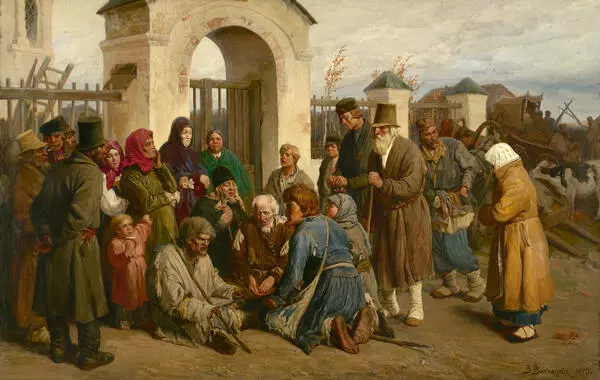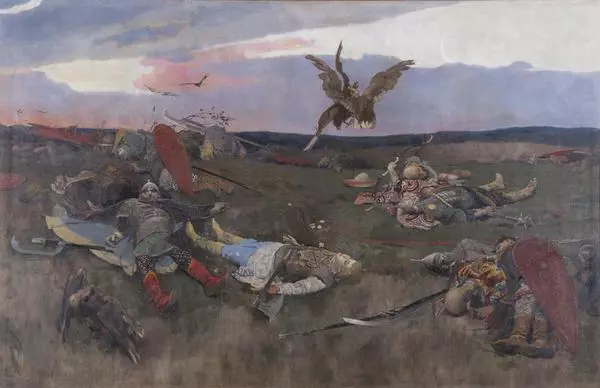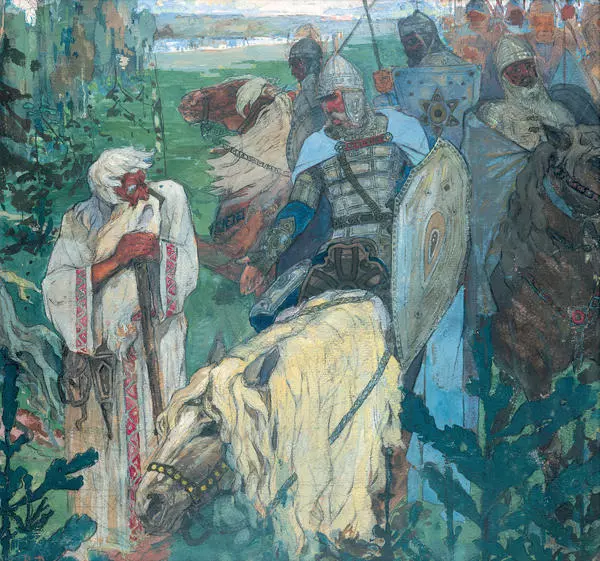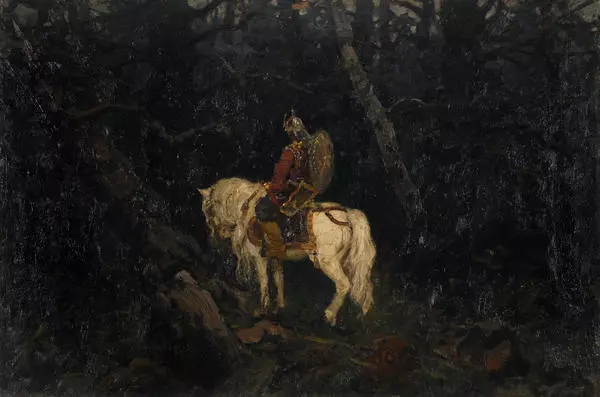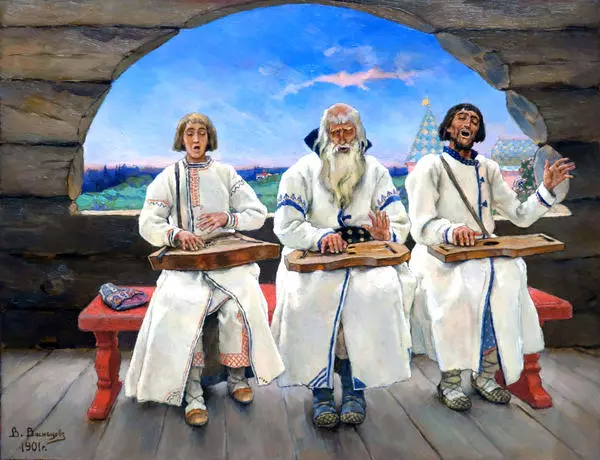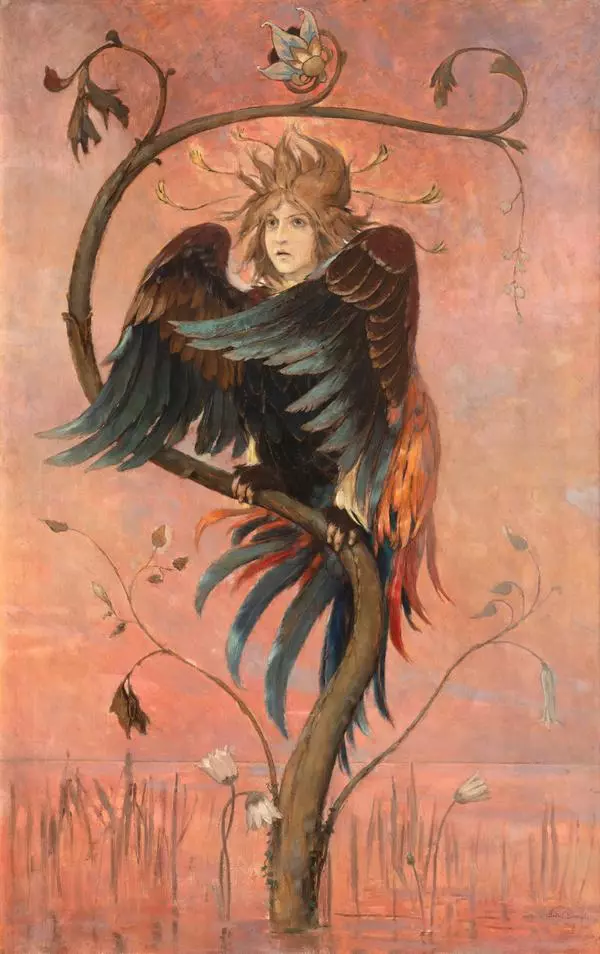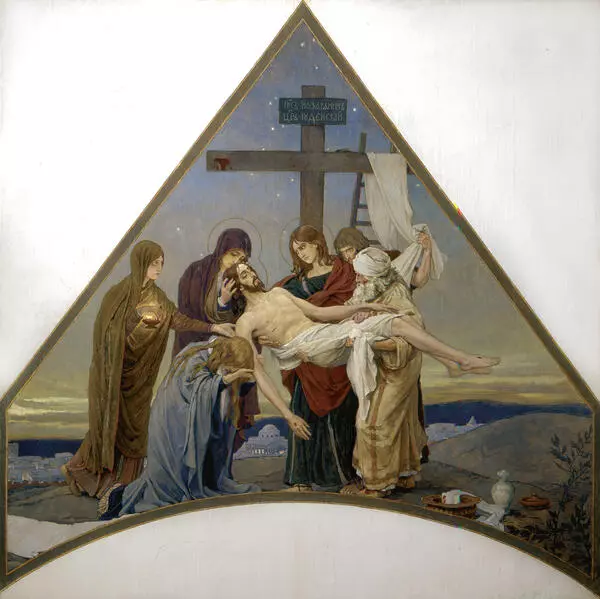Viktor Vasnetsov, the son of a village priest, was born in Vyatka and grew up in the Russian countryside among peasant children. He had his first painting lessons with his father.
In the 1870s, during his studies and after graduating from the Imperial Academy of Arts, Viktor Vasnetsov began his career, giving preference to genre painting, that is, everyday scenes. He created a number of canvases, including works ‘From apartment to apartment’, ‘Tea drinking in a tavern’, ‘Preference’. Thanks to them Vasnetsov earned recognition as a master of genre painting.
Nevertheless already during his passion for genre painting, the artist worked on book illustrations, in which he turned to the images of Russian folklore. He dedicated himself to the new topic when he moved to Moscow in 1878, as a city that preserved the Russian spirit and Russian antiquity. In Moscow, Vasnetsov became an active member of the Abramtsevo circle, which included artists of the old and new generations. The center of this artistic association was the Moscow house of the patron Savva Mamontov and his estate near Moscow Abramtsevo. The members of the circle strove to revive ancient Russian traditions in various forms of art. This atmosphere contributed to the fact that the folklore theme became the leading one in Vasnetsov’s work. The artist laid the foundation for a new direction in art - the glorification of antiquity, the neo-Russian style.
The painting by Vasnetsov “Boyaryshnya” presented in the exhibition belongs to the Abramtsevo period of the master’s life and was painted before the artist left for Kiev, where he was invited to participate in the painting of the Vladimir Cathedral, presumably in 1884. The work is of a transitional nature between the old and new styles. On one hand, the author paid enough attention to the transfer of materiality and tangibility in the image of a young girl with a soft oval face, large dark eyes under sable eyebrows, bright plump lips. On the other hand, there are new features in the canvas such as the conventionality and decorativeness of the background, ornamentation in the image of the headdress, the gold sewing of the dress, the printed fabric of the bedspread on which the girl sits. The young boyar resembles a princess from a Russian fairy tale. The artist strove to create a romantic image representing the national ideal of female beauty with its ineffable mystery, the ideal of high morality.
Vasnetsov’s painting “Boyaryshnya” is among 12 works that were donated by Margarita Morozova, the widow of the Moscow collector Ivan Morozov, to the The Vasnetsov Brothers Art Museum upon the occasion of its opening in 1910.
In the 1870s, during his studies and after graduating from the Imperial Academy of Arts, Viktor Vasnetsov began his career, giving preference to genre painting, that is, everyday scenes. He created a number of canvases, including works ‘From apartment to apartment’, ‘Tea drinking in a tavern’, ‘Preference’. Thanks to them Vasnetsov earned recognition as a master of genre painting.
Nevertheless already during his passion for genre painting, the artist worked on book illustrations, in which he turned to the images of Russian folklore. He dedicated himself to the new topic when he moved to Moscow in 1878, as a city that preserved the Russian spirit and Russian antiquity. In Moscow, Vasnetsov became an active member of the Abramtsevo circle, which included artists of the old and new generations. The center of this artistic association was the Moscow house of the patron Savva Mamontov and his estate near Moscow Abramtsevo. The members of the circle strove to revive ancient Russian traditions in various forms of art. This atmosphere contributed to the fact that the folklore theme became the leading one in Vasnetsov’s work. The artist laid the foundation for a new direction in art - the glorification of antiquity, the neo-Russian style.
The painting by Vasnetsov “Boyaryshnya” presented in the exhibition belongs to the Abramtsevo period of the master’s life and was painted before the artist left for Kiev, where he was invited to participate in the painting of the Vladimir Cathedral, presumably in 1884. The work is of a transitional nature between the old and new styles. On one hand, the author paid enough attention to the transfer of materiality and tangibility in the image of a young girl with a soft oval face, large dark eyes under sable eyebrows, bright plump lips. On the other hand, there are new features in the canvas such as the conventionality and decorativeness of the background, ornamentation in the image of the headdress, the gold sewing of the dress, the printed fabric of the bedspread on which the girl sits. The young boyar resembles a princess from a Russian fairy tale. The artist strove to create a romantic image representing the national ideal of female beauty with its ineffable mystery, the ideal of high morality.
Vasnetsov’s painting “Boyaryshnya” is among 12 works that were donated by Margarita Morozova, the widow of the Moscow collector Ivan Morozov, to the The Vasnetsov Brothers Art Museum upon the occasion of its opening in 1910.
